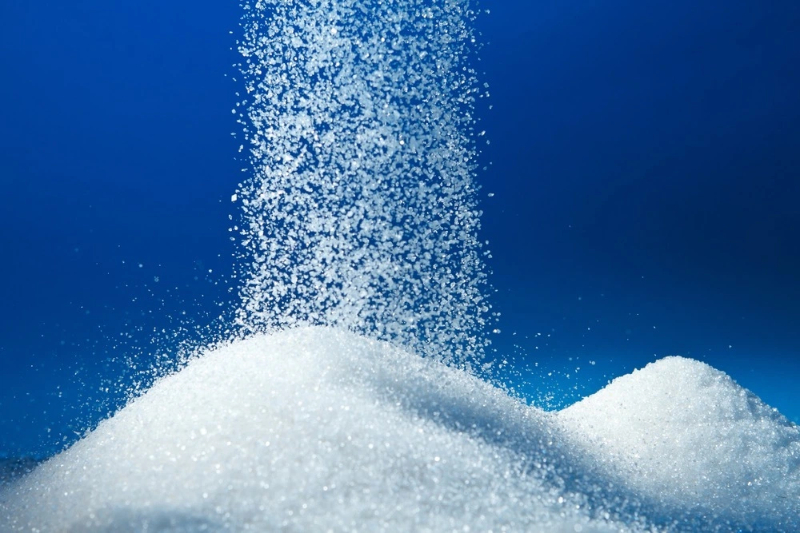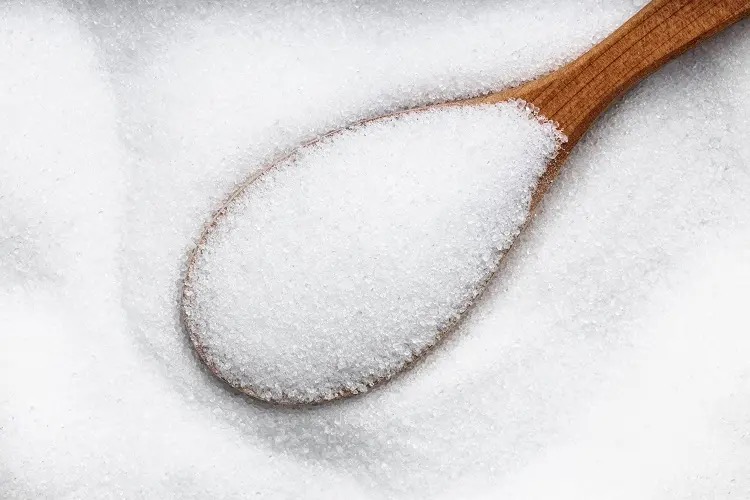







Content Menu
● Chemical Nature and Mechanism of Sweetness
● Applications in Food and Beverages
● Health and Safety Considerations
● Quality Assurance, Compliance, and OEM/ODM Implications
● Market Trends and Competitive Landscape
● Sustainability and Environmental Considerations
● Case Studies and Best Practices
● Regulatory and Labeling Considerations
● Future Outlook and Innovation
● FAQ
>> 1. What is Sucralose, and how is it different from sugar?
>> 2. Is Sucralose safe for diabetics and people watching sugar intake?
>> 3. Can Sucralose be used in baking and cooking?
>> 4. How is Sucralose produced commercially?
>> 5. Are there health concerns associated with long-term Sucralose use?
Sucralose stands as a leading artificial sweetener with a long-standing track record in food, beverage, and health-related products. Derived from sucrose through a selective chlorination process, Sucralose delivers a sweetness intensity far surpassing that of sucrose while contributing virtually no calories. Its stability under heat, acidic and basic conditions, and broad flavor compatibility makes it a versatile ingredient for manufacturers worldwide, including those in the food, beverage, and medical nutrition sectors. This article explores the chemistry, production, applications, safety, and market dynamics of Sucralose, while examining its role in health-focused product development, including how natural alternatives and synthetic sweeteners compare on key metrics such as sweetness potency, caloric impact, and dental health implications. Throughout, the term Sucralose appears in emphasis as a primary focal point for understanding modern sweetening strategies.

Sucralose is a chlorinated derivative of sucrose where three hydroxyl groups have been replaced with chlorine atoms. This structural modification markedly reduces the molecule's metabolism in humans, contributing to its near-zero caloric value. The resulting compound binds to sweet receptors with high affinity, translating to intense sweetness without triggering significant insulin responses in most individuals. The chemical stability of Sucralose under typical cooking temperatures enables its use in baked goods, dairy products, and shelf-stable beverages without substantial loss of sweetness. In many product formulations, Sucralose is combined with bulking agents and other sweeteners to achieve desired mouthfeel and sensory profiles, especially where a zero-calorie experience is required. In the product development context, Sucralose's sensory profile—its sweet intensity, aftertaste, and mouthfeel—drives formulation strategies across varied categories such as beverages, confectionery, and functional foods.
The manufacturing process of Sucralose begins with refined sucrose, followed by a sequence of selective chlorination steps that replace specific hydroxyl groups on the sugar molecule. After chlorination, protection and deprotection steps are used to ensure regioselectivity and minimize side reactions, resulting in a high-purity end product. Purification steps, including crystallization and filtration, help achieve commercial-grade purity levels typically exceeding 99%. The process is designed to minimize impurities that could affect flavor, color, or stability in downstream applications. Quality assurance protocols often include analytical testing for residual solvents, chloride content, and elemental impurities to comply with regulatory standards for food-grade sweeteners. In industry practice, keeping purity high is crucial not only for sensory quality but also for regulatory compliance and manufacturing consistency across large-scale production.
Sucralose is widely used across food and beverage categories due to its heat stability, solubility spectrum, and lack of fermentability by common gut microflora. Beyond being a zero-calorie sweetener, Sucralose does not contribute to dental caries and is compatible with a range of processing conditions, from hot beverages to cold desserts. Common applications include:
- Carbonated soft drinks and ready-to-drink beverages
- Baked goods and confectionery where heat stability is essential
- Dairy products like yogurts, frozen desserts, and creamers
- Nutritional bars and cereals
- Gelatin desserts, puddings, and gummies
- Chewing gums and oral care products
In many formulations, Sucralose is used alone or in combination with other sweeteners to balance sweetness intensity, timing, and mouthfeel. The choice of bulking agents, such as dextrose or maltodextrin, depends on the targeted product category and regulatory considerations. The final sensory profile is often tuned through deliberate sweetener blends, taking into account regional taste preferences and dietary guidelines.
Regulatory agencies around the world have conducted extensive evaluations of Sucralose for safety at typical usage levels. The consensus from major authorities supports the safe use of Sucralose in foods and beverages for the general population, including sensitive subgroups. Long-term studies have examined potential effects on metabolism, gut microbiota, and dental health, with findings indicating no significant adverse effects at approved intake levels. It is important for manufacturers to monitor cumulative exposure, particularly in products consumed by children or individuals with specific dietary restrictions. When integrating Sucralose into health-oriented product lines, researchers consider the glycemic impact, potential interactions with other functional ingredients, and the overall nutritional strategy of the formulation.

For manufacturers providing OEM/ODM services to foreign brands, Sucralose plays a central role in enabling low-calorie product variants. The OEM/ODM pathway allows brands to leverage established production capabilities, quality management systems (including HACCP and GMP), and validated processes to ensure consistent product quality. This includes:
- Raw material sourcing controls for high-purity sucrose and regulatory-compliant chlorinating agents
- Process controls to maintain regioselectivity and impurity profiles
- In-process testing and final product testing for purity, moisture, and crystalline form
- Packaging and labeling compliance with regional regulations and allergen declarations
- Documentation packages suitable for regulatory submissions and customer audits
The OEM/ODM model supports flexible production scales, from pilot runs to full-scale commercial manufacturing, enabling rapid response to evolving market demand for Sucralose-containing formulations.
The Sucralose market has evolved through patent landscapes, consumer demand for low-calorie sweeteners, and the emergence of new product formats. Historically, a few major players have dominated production and distribution, shaping pricing and access to technology. Market dynamics include the balance between steady demand in tabletop sweeteners and growing use in beverage applications across global markets. Standardized quality and consistent supply chains are critical for manufacturers who rely on Sucralose to maintain product stability, flavor integrity, and regulatory compliance across diverse geographies.
Manufacturing Sucralose involves chemical processes that require careful handling of reagents and waste streams. Industry best practices emphasize waste minimization, energy efficiency, and responsible disposal of chlorinated by-products. Companies often invest in process optimization to reduce solvent use, improve crystallization efficiency, and recover valuable by-products where feasible. Environmental stewardship also encompasses the packaging stage, aiming to reduce material usage and improve recyclability to align with broader sustainability goals in the food and pharmaceutical supply chains.
- Case Study A: A multinational beverage company optimizes its Sucralose-containing product line by blending Sucralose with other sweeteners to achieve a sugar-like taste while maintaining zero-calorie claims. The approach focuses on consistent sweetness perception across temperature ranges and storage conditions.
- Case Study B: A confectionery producer implements a robust quality management program for Sucralose-containing candies, ensuring uniform dispersion in hard candy matrices and preventing crystallization issues that could affect texture and bite.
- Case Study C: A pharmaceutical nutrition manufacturer integrates Sucralose into enteral nutrition products, balancing sweetness with palatability and stability under processing and storage conditions.
Regulatory labeling for Sucralose varies by region but typically includes standardized naming conventions (e.g., Sucralose as a food additive) and compliance with permitted usage levels. Packaging may require allergen declarations, ingredient lists, and nutritional disclosures consistent with local regulations. For medical nutrition or dietary supplement applications, additional regulatory pathways may be required, including approval or notification processes and post-market surveillance where applicable.
Continued innovation in Sucralose applications is likely to focus on sensory optimization, compatibility with plant-based ingredients, and improved process efficiencies. Research into alternative chlorination strategies, refinement of purification steps, and integration with novel bulking agents will shape how new product lines leverage Sucralose in health-focused formulations. The overarching objective remains to deliver a consistent, high-quality sweetener that supports consumer health goals without compromising taste or product integrity.
In the landscape of modern sweetening, Sucralose stands out for its potency, stability, and versatility. As a trusted ingredient for food, beverage, and health-focused products, Sucralose enables manufacturers to deliver zero-calorie sweetness at scale while maintaining sensory quality and regulatory compliance. For Chinese manufacturers serving international brands, the ability to produce Sucralose through robust OEM/ODM partnerships—coupled with stringent quality control, transparent labeling, and sustainable practices—positions Sucralose as a cornerstone of low-calorie product innovation in the global market.

Sucralose is a chlorine-substituted derivative of sucrose, offering intense sweetness with negligible calories and high heat stability, unlike sugar which provides calories and undergoes significant browning and moisture changes during heating.[3][7]
Regulatory reviews support its safety and zero-calorie status for general consumption, making it a popular choice for individuals managing blood sugar and weight. Individual responses may vary, and moderation is recommended.[8][9]
Yes, Sucralose's heat stability allows for baking and cooking applications, though formulation strategies may adjust for sweetness intensity and texture with other ingredients.[1][3]
Commercial production starts with sucrose and employs selective chlorination with purification steps to achieve high-purity end products suitable for food and pharmaceutical uses.[1][3]
Large-scale safety assessments by regulatory bodies have found Sucralose to be safe at approved intake levels in general populations, though ongoing
[1](https://www.nbinno.com/2025/article/sweeteners/the-manufacturing-process-of-sucralose-ensuring-quality-and-purity)
[2](https://processengr.com/project/sucralose-sweetener-manufacturing-plant-preliminary-process-design/)
[3](https://www.sciencedirect.com/topics/food-science/sucralose)
[4](https://www.spectrumchemical.com/media/flowchart/Flowchart_S1416.pdf)
[5](https://www.sciencesnail.com/science/the-synthesis-of-sucralose-from-sucrose)
[6](https://www.youtube.com/watch?v=u8OuO3YuevE)
[7](https://en.wikipedia.org/wiki/Sucralose)
[8](https://www.fda.gov/food/food-additives-petitions/aspartame-and-other-sweeteners-food)
[9](https://ific.org/insights/everything-you-need-to-know-about-sucralose/)
